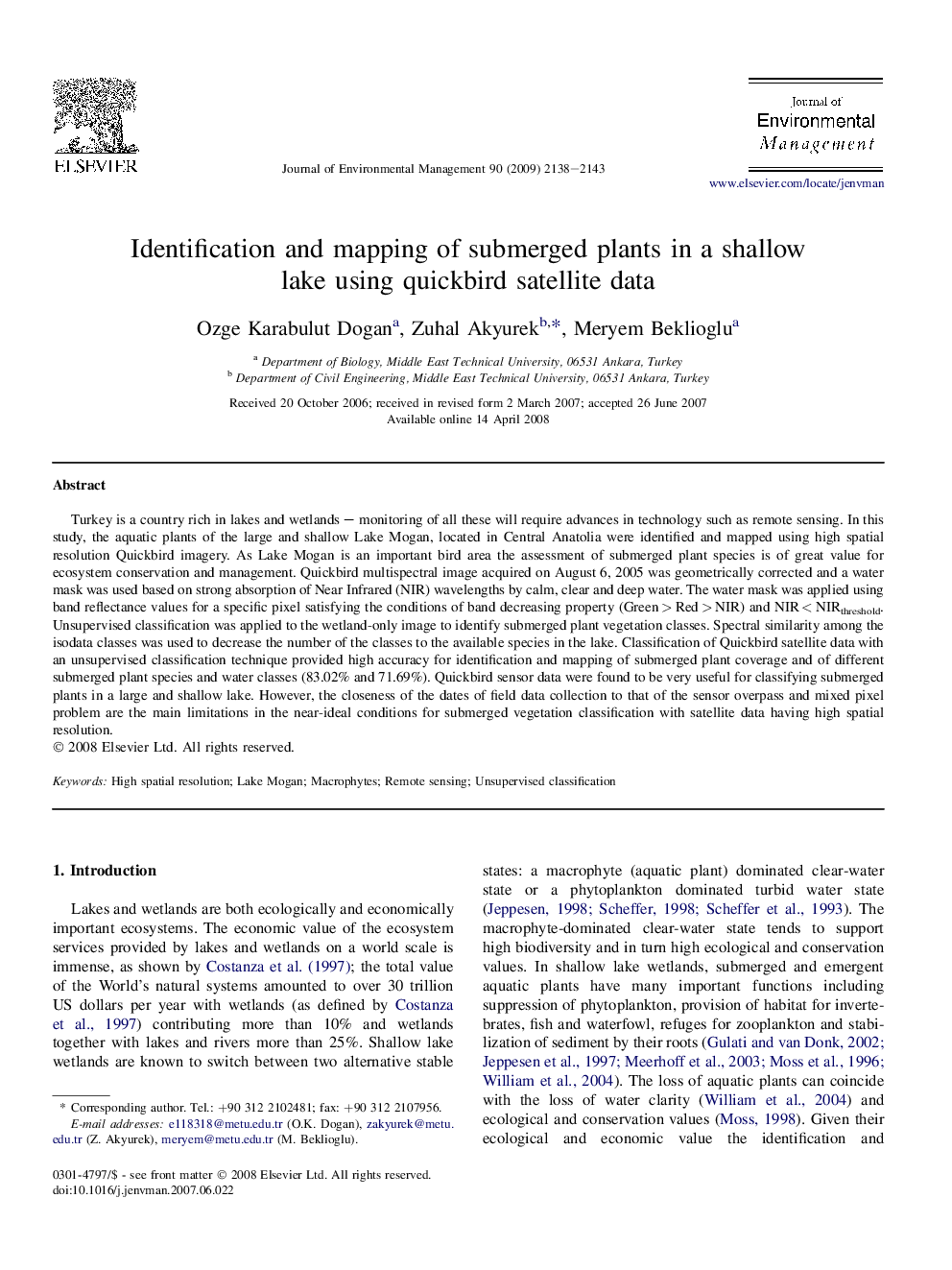| Article ID | Journal | Published Year | Pages | File Type |
|---|---|---|---|---|
| 1058176 | Journal of Environmental Management | 2009 | 6 Pages |
Turkey is a country rich in lakes and wetlands – monitoring of all these will require advances in technology such as remote sensing. In this study, the aquatic plants of the large and shallow Lake Mogan, located in Central Anatolia were identified and mapped using high spatial resolution Quickbird imagery. As Lake Mogan is an important bird area the assessment of submerged plant species is of great value for ecosystem conservation and management. Quickbird multispectral image acquired on August 6, 2005 was geometrically corrected and a water mask was used based on strong absorption of Near Infrared (NIR) wavelengths by calm, clear and deep water. The water mask was applied using band reflectance values for a specific pixel satisfying the conditions of band decreasing property (Green > Red > NIR) and NIR < NIRthreshold. Unsupervised classification was applied to the wetland-only image to identify submerged plant vegetation classes. Spectral similarity among the isodata classes was used to decrease the number of the classes to the available species in the lake. Classification of Quickbird satellite data with an unsupervised classification technique provided high accuracy for identification and mapping of submerged plant coverage and of different submerged plant species and water classes (83.02% and 71.69%). Quickbird sensor data were found to be very useful for classifying submerged plants in a large and shallow lake. However, the closeness of the dates of field data collection to that of the sensor overpass and mixed pixel problem are the main limitations in the near-ideal conditions for submerged vegetation classification with satellite data having high spatial resolution.
